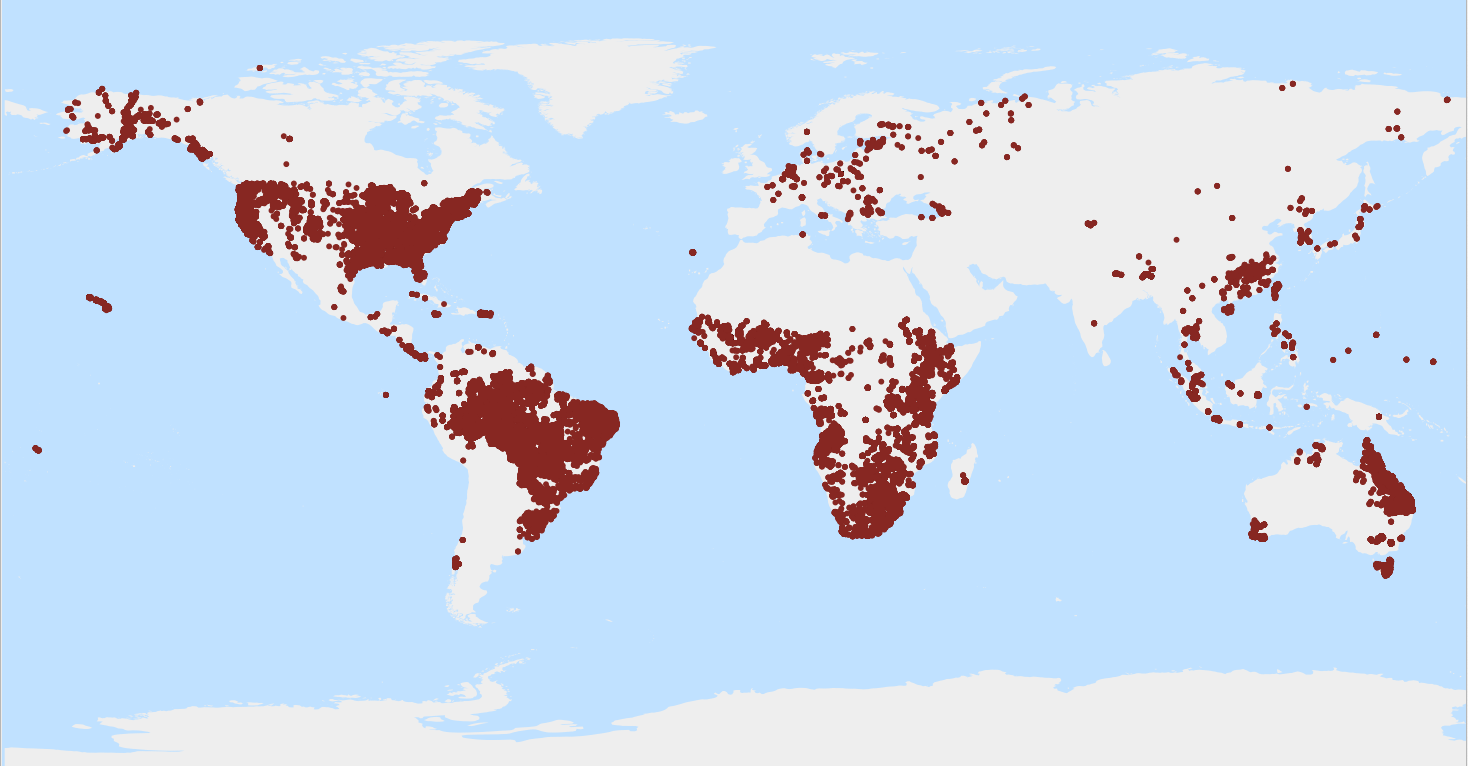WoSIS latest - Effective cation exchange capacity - ISRIC
Capacity of the fine earth fraction* to hold exchangeable cations at the pH of the soil (ECEC). Conventionally approximated by summation of exchangeable bases (Ca2+, Mg2+, K+, and Na+) plus 1 N KCl exchangeable acidity (Al3+ and H+) in acidic soils (cmol(c)/kg).
WoSIS_latest is a 'dynamic dataset' that contains the most recent complement of quality-assessed and standardised soil data served from WoSIS (ISRIC World Soil Information Service). The source data were shared by a wide range of data providers (see: https://www.isric.org/explore/wosis/wosis-contributing-institutions-and-experts ).
Being dynamic, the contents of 'wosis_latest' will change once new point data are acquired, cleansed and standardised, additional soil properties are considered, and/or when possible amendments are required.
Static snapshots of 'wosis_latest' are released at irregular intervals for consistent citation purposes and to discuss methodological changes; the last snapshot is available at https://doi.org/10.5194/essd-16-4735-2024.
For general information about WoSIS please see the FAQ-page at https://www.isric.org/explore/wosis/faq-wosis.
Simple
- Date (Publication)
- 2020-05-01
- Identifier
- 3ed0d2a2-8822-421b-8e89-a7f3bb8a973a
- Presentation form
- Digital map
- Status
- On going
- Theme
-
- effective cation exchange capacity
- soil profiles
- Stratum
-
- Soil science
- Region
-
- Global
- Access constraints
- License
- Use constraints
- License
- Other constraints
- Licenced per profile, as specified by data provider and indicated in the data
- Spatial representation type
- Vector
- Denominator
- 100000
- Metadata language
- English
- Character set
- UTF8
- Topic category
-
- Geoscientific information
- Begin date
- 1918-01-01
- End date
- 2013-02-12
))
- Reference system identifier
- EPSG / 4326
- Distribution format
-
-
CSV
(
)
-
CSV
(
)
- OnLine resource
-
:wosis_latest_ecec
(
OGC:WFS
)
WoSIS latest - Effective cation exchange capacity - ISRIC
- OnLine resource
- Scientific paper ( WWW:LINK-1.0-http--related )
- OnLine resource
- Project webpage ( WWW:LINK-1.0-http--related )
- OnLine resource
-
wosis_latest_ecec
(
OGC:WMS
)
WoSIS latest - Effective cation exchange capacity - ISRIC
- Hierarchy level
- Dataset
- File identifier
- 3ed0d2a2-8822-421b-8e89-a7f3bb8a973a XML
- Metadata language
- English
- Character set
- UTF8
- Hierarchy level
- Dataset
- Hierarchy level name
- dataset
- Date stamp
- 2024-11-26T15:44:08
- Metadata standard name
- ISO 19115:2003/19139
- Metadata standard version
- 2003/Cor.1:2006
Overviews

Spatial extent
))
Provided by

 ISRIC Data Hub
ISRIC Data Hub